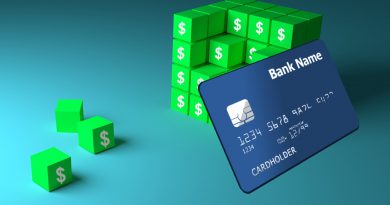Tips for opening your first bank account in Canada
Not sure how banking works in Canada and which bank to open your account with? I am no expert in retail banking but would like to share my experience of doing the same and outline the priorities you might want to consider. Let us first quickly initiate you into the banking system of Canada.
Banking in Canada
Banking is certainly a mature sector and a oligopoly as almost all prominent banks have evolved for more than 150 years of their existence. Top five banks, as they are typically called, are Royal Bank of Canada (RBC), TD Bank, Bank of Montreal (BMO), CIBC and Scotiabank. It is believed that Canada has the highest number of ATM's per capita in the world. The big five cumulatively hold more than $100 billion in assets and leave very little on the table for rest of the tier-II banks. Canadian banks are perhaps the most conservative in the world and hence survived the 2008 crisis without a single meltdown. In fact some of them bought a lot of smaller banks/branches at that time to initiate a healthy expansion especially in US. The Canadian Federal Government has tightly controlled the regulations very closely in Canada when compared to the regulations in US. However, that also means that effective competition has given way to a monopolistic behaviour. The bottomline being that don't expect to find great deals and freebies but be prepared to shell out money for almost every service. Even ordering a cheque book will set you back by a couple of dollars.
Types of retail banking accounts
Typically bank accounts are categorised into Savings and Chequing account.
Chequing account: It is the primary channel used for daily transactions like making transfers, paying your bills, depositing payrolls, depositing cheques etc. You can draw a cheque, make debit purchases, withdraw cash and send e-transfers. Most banks charge a fee on chequing accounts but it may be waived off for a year or so for newcomers or if you maintain some minimum balance in the account. Please be careful and read the fine print as most banks would only offer a limited number of transactions as free. Chequing accounts normally don't pay any interest on the deposits.
Savings account: Their primary purpose of this account is to store large amounts of funds for long periods of time. The key benefit being that it offers a higher interest rate on the deposits. Banks would limit the number of free transactions every month on this account and be sure to read the fine print carefully. You might be charged some monthly fee as well. Withdrawing cash from a savings account through an ATM may likely get you charged as well. You cannot write cheques on it or make debit purchases. Hence it utility is quite restricted.
Thus Savings account would typically be used to park your extra funds while you will be using your chequing account to conduct day-to-day transactions.
Documents required to open a bank account
If you are a newcomer who has just landed in Canada, you can use your SIN and the stamped Confirmation of Permanent Residence along with your passport (as your proof of Identity) to open a bank account. Read here to find an exhaustive list of documents allowed to open one. You may also be asked your Canadian address where subsequent communication like statements and mails would be sent. Please do give a physical address and have someone carefully store your monthly bank statements. The statements that you receive through the physical mail is considered a valid proof of address for other services like applying for an OHIP number later.
Things to consider while opening a bank account
- Credit Card: It is extremely important for you to start building your credit history in Canada as soon as possible. You need a decent credit score to be eligible for even basic things like a postpaid telecom number, renting a place of your own or any other kind of loan facility. Thus your top priority is to get a credit card with maximum possible credit limit. Almost everyone makes transactions here using their credit cards to help build that history and use of cash is somewhat limited in shopping activities. There are two ways of receiving a credit facility from your bank. Pre-paid credit limit where you will be required to deposit say $2000 into the bank in to be eligible for a credit card with a $2000 credit limit. Thus there is no effective credit here but you still have to do it as you need to start building a credit score. For those who land here on a skilled immigration visa like Express Entry, most banks would offer you a credit limit like $2000 right-away without any required deposits. Make sure that you shop around to find yourself the bank that is offering you the highest possible credit limit. Your credit score is also a function of how much of the credit facility you utilise every month and typically a utilisation of around 30% is considered good. But if you utilise say 70% or 100% of the limit that you have, your credit score will be negatively impacted. Having a larger limit like $3000 helps as utilising $1000 would leave you at a sweet spot of 33%.
- Fees and charges: Definitely shop around and negotiate for the maximum period for which you can get free account services without incurring monthly charges. Be careful to look at both the monthly fees, transaction charges, ATM fees, fees for international transfers etc.
- Freebies: Almost all banks have promotional offers exclusively for newcomers so please search for what kind of offers are being run when you land. Some of them would entice you to subscribe to a higher fee plan by offering a freebie like an iPad but please be wary of such offers and objectively calculate the benefits accrued to you over a period of time.
How to transfer money from your Forex card to your bank account
In case you brought a substantial part of your proof of funds on a Forex card, you may easily deposit that into your bank account. When I got my account opened, I was immediately provided a temporary debit card to conduct transactions at ATM's while I received the Credit card later on in my snail mail. You can simply withdraw cash from the Forex card and deposit into your account. There might be a small $ fee for that. Alternatively, you may request the banking advisor servicing you to transfer the money online from the Forex card to your new bank account directly but please enquire the fee that you may be levied in advance.
Please do not consider this article as any form of financial advise or recommendation. If this article was helpful to you, do let me know under the comments. Thanks for reading!!


